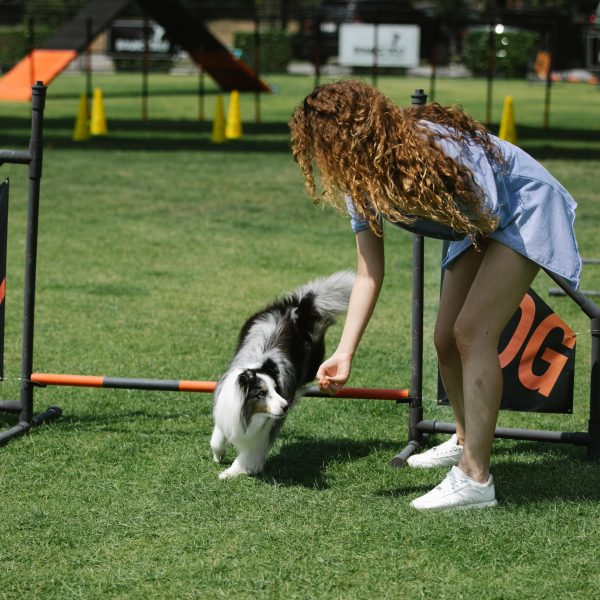Crate training is a well-known and effective technique used primarily for housebreaking and managing dogs. This method involves the use of a crate or kennel as a comfortable and secure space for pets to rest and relax, while also serving as a tool for training and behavior management. Crate training provides a range of benefits for both pet owners and their furry companions. In this comprehensive guide, we will delve into the concept of crate training, its advantages, and a step-by-step approach to successfully implement this technique.
Understanding the Concept of Crate Training
At its core, crate training revolves around introducing your pet to a crate, which serves as an enclosed space mimicking a den environment. The size of the crate matters significantly—it should neither be too large nor too small. The crate should provide enough room for your pet to stand, turn around, and lie down comfortably. It’s crucial to emphasize that the crate should be perceived as a secure sanctuary for your pet, not a form of punishment.
Advantages of Crate Training
- Housebreaking: One of the primary reasons behind crate training is to facilitate housebreaking, or teaching pets to eliminate outdoors. Dogs possess a natural instinct to keep their sleeping areas clean. By using a crate, you can help them develop control over their bladder and bowel movements. Confining them in a crate when unsupervised reduces the likelihood of accidents indoors.
- Creating a Safe Space: The crate can become a haven for your pet, offering a sense of security and comfort. This proves invaluable during stressful situations like thunderstorms, fireworks, or crowded events, providing a space where your pet can feel at ease.
- Convenience in Vet Visits: Crate training simplifies traveling with your pet and reduces stress for both of you. Familiarity with crates enables pets to stay calm during car rides and prepares them for visits to the vet or other outings.
- Preventing Destructive Behavior: Crates can effectively curb destructive behavior, especially in puppies or dogs with separation anxiety. Using a crate when you’re not around prevents your belongings from being chewed or destroyed.
- Training and Discipline Made Easier: Crate training aids in teaching commands and desired behaviors. When introduced correctly, the crate becomes a tool for reinforcing positive behavior. It also helps train pets to settle down and relax on command.
Step-by-Step Guide to Crate Training
- Choosing the Appropriate Crate: Select a crate that matches your pet’s size. It should offer enough space for them to move comfortably without being overly roomy, as excessive space might encourage them to use one end as a bathroom.
- Building Positive Associations: Gradually introduce the crate to your pet in a gentle manner. To make the crate inviting, place treats, toys, and bedding inside. Initially, keep the door open so your pet can explore it at their own pace.
- Mealtime Association: During mealtime, feed your pet inside the crate. This helps them associate positive experiences with the crate and establishes a routine.
- Incremental Door Closing: Start by closing the crate door for short intervals while your pet is inside, gradually increasing the duration. Stay nearby during this process to alleviate any anxiety they may experience.
- No Punishment: Never use the crate as a form of punishment. It must consistently be seen as a safe and positive space for your pet.
- Gradual Alone Time: Once your pet is comfortable with the closed door, begin leaving them in the crate for short periods. This helps them adjust to being alone in a controlled environment.
- Sleeping and Housebreaking: Utilize the crate during sleep to aid in housebreaking. Most pets naturally avoid soiling their sleeping area.
- Supervision: Until your pet is fully housebroken and reliable, always supervise them when they are outside of the crate.
- Avoid Common Mistakes: Do not use the crate as a prolonged confinement tool or as punishment. While crates are useful, overuse can lead to negative associations. Engaging in activities and maintaining social connections are crucial for your pet’s well-being.
- Patience and Adaptation: Take your time during the training process to prevent stress and ensure your pet doesn’t develop a dislike for their crate. Patience is key.
- Address Distress: If you notice signs of distress, such as whining or pawing, address your pet’s concerns and adjust the training accordingly.
Crate training, when executed correctly, is an effective method that greatly benefits both pets and their owners. It aids in housebreaking, behavior management, and offers a secure space for pets to rest and feel comfortable. Successful crate training necessitates patience, positive reinforcement, and a deep understanding of your pet’s needs and behaviors. When approached with care, crate training can be a valuable tool in nurturing a well-adjusted pet.








